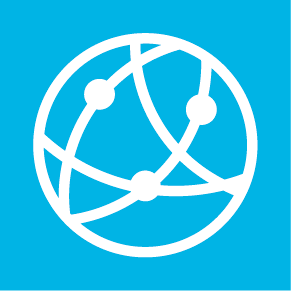With the outbreak of coronavirus (COVID-19), many companies have had to put their business continuity plans to the test — shedding light into areas where their plans may not have been as complete or effective as expected. Without a solid and tested business continuity plan in place, organisations may find themselves confused — which can lead to delayed response time and in some cases, a negative impact to the services or products a business provides.
In this article, I’ll outline the importance of having a business continuity plan, tips for creating a thorough plan and who should be involved in the planning process.
The Importance of Having a Business Continuity Plan
Before I highlight its purpose, let’s start with the basic definition of a business continuity plan. It can be defined as:
A step-by-step business strategy built to be executed at a time when there is a disruption in services to protect people and assets and have the ability to resume operations in an expedient and controlled fashion. In addition, it identifies requirements and an execution strategy related to business operations and people.
It’s important to have a thorough and complete plan because it’s the only way to ensure organisations are effectively prepared for a business interruption. A solid plan enables organisations to continue critical business processes to minimise the impacts to customers and employees.
As an example, our business continuity plans at PeopleScout allow us to continue service delivery to clients in any type of adverse condition and lower the overall cost of disruption from incidents, all while ensuring we are meeting our contractual obligations. When it comes to our clients, we always make sure we have a current, tested business continuity plan in place to effectively support their business in any situation.
Creating a Thorough and Complete Plan
What should the business continuity plan look like?
First, it’s important to note that “thorough and complete” does not necessarily mean “complicated” or “difficult to understand.” Also, the technology used to capture the details of the plan is less important than the accessibility of the details that are included along with the plan itself.
An effective business continuity plan should clearly define:
- What to do
- How to do it
- Who will do it
- When to do it
In addition, a business continuity plan should be easy to use and be detailed enough for any team member to successfully execute. When putting your plan together, take these components into consideration:
- Identification of the planning team
- Defined processes
- Employee list/call list to reach out to
- Vital records associated with the process
- Telecom needs
- Work area recovery strategies
- Applications (software, equipment, supplies)
What steps should an organisation take when building the plan?
While certain events cannot be planned for, the optimum scenario is to build the business continuity plan when there isn’t an event or disaster happening. Attempting to develop real-time responses during a crisis situation is much more difficult than following a plan that was already created.
When building your plan, it is important to evaluate, identify and ask questions.
- Evaluate your organisation. Understand the unique needs based on location, technology that’s used, number of employees, processes that are completed, etc.
- Identify the key participants to be included in the planning effort. This should include a combination of leaders and subject matter experts.
- Ask questions! It’s in the answers to those questions that you will truly understand what is needed to build an effective plan.
After you do those three things, the basic methodology that a company should use to finalise their plan includes:
Strategic Planning Phase: This is the phase that prepares us for the incident. It includes risk analysis (what could go wrong?), business impact analysis (what are the maximum acceptable downtimes?), requirements analysis (what do we need to recover?) and recovery options (how will we recover?).
Tactical Planning Phase: This phase tells us how to respond to the incident. The organisation should ensure effective documentation of how to engage the recovery option when the time comes. Lay the groundwork for what you would need to do in the event you need to execute your plan.
Consider these tips for building a thorough and complete business continuity plan:
- Always look for opportunities to improve your plan. The plan should be a living, breathing document that is reviewed on a regular cadence.
- Consider hypothetical situations and plan accordingly. If you change how you do things today, consider how it impacts your business continuity strategies. Do they also need to change?
- Ask yourself: Is your plan detailed enough to allow junior-level team members to execute the plan at time of incident if your planning team is compromised?
- Lead tabletop exercises to discover other opportunities to improve your programme and plans. Does everyone on your team know what is expected of them during a business interruption incident?
For more information on tabletop exercises and who should be involved in them, listen to this article’s accompanying podcast.
Advice for Developing Your First Business Continuity Plan
When you think about developing a business continuity plan, especially for the first time, it’s very easy to get paralysed when you’re starting with a blank sheet of paper. One thing to remember is that the primary objective is planning — this is what creates the ability to recover.
So, physically writing the plan or documenting specific instructions is the secondary objective. Look at your plan and ask:
- Does it clearly state what to do?
- Does it indicate how to do it?
- Does it reflect who does it?
- Does it identify when to do it?
If the answer to those four questions is yes, and you verify that to be true through the process of testing, then you’re sure to have a plan that should serve you well in the event of an incident and ensure you are prepared for any event that may occur.
To learn more about ways employers can respond to the coronavirus (COVID-19) outbreak, visit our Resource Centre.










